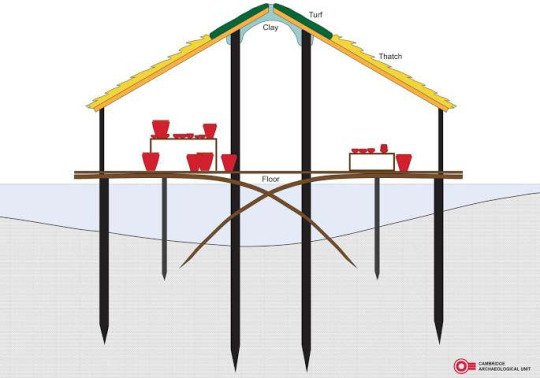via http://ift.tt/2a8zVdy:
archaeologicalnews:
Excavation of a site in the Cambridgeshire fens reveals a Bronze Age settlement with connections far beyond its watery location. Over the past ten months, Must Farm has yielded Britain’s largest collections of Bronze Age textiles, beads and domestic artefacts. Together with timbers of several roundhouses, the finds provide a stunning snapshot of a community thriving 3,000 years ago.
Archaeologists have made remarkable discoveries about everyday life in the Bronze Age during their ten-month excavation of 3,000-year-old circular wooden houses at Must Farm in Cambridgeshire, a site that has been described as the ‘Pompeii of the fens’.
Believed to be the best-preserved Bronze Age dwellings ever found in Britain, the houses were destroyed by a fire that caused the settlement, which was built on stilts, to collapse into the shallow river beneath. The soft river silt encapsulated the remains of the charred dwellings and their contents, which survive in extraordinary detail. Read more.

archaeologicalnews:
Excavation of a site in the Cambridgeshire fens reveals a Bronze Age settlement with connections far beyond its watery location. Over the past ten months, Must Farm has yielded Britain’s largest collections of Bronze Age textiles, beads and domestic artefacts. Together with timbers of several roundhouses, the finds provide a stunning snapshot of a community thriving 3,000 years ago.
Archaeologists have made remarkable discoveries about everyday life in the Bronze Age during their ten-month excavation of 3,000-year-old circular wooden houses at Must Farm in Cambridgeshire, a site that has been described as the ‘Pompeii of the fens’.
Believed to be the best-preserved Bronze Age dwellings ever found in Britain, the houses were destroyed by a fire that caused the settlement, which was built on stilts, to collapse into the shallow river beneath. The soft river silt encapsulated the remains of the charred dwellings and their contents, which survive in extraordinary detail. Read more.
